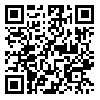1. Dick DM, Hancock LC. Integrating basic research with prevention/intervention to reduce risky substance use among college students. Front Psychol. 2015;6:544. [
DOI]
2. Hekmatiyan Fard S, Rajabi S, Hoseini FS. The effectiveness of eye movement desensitization and reprocessing therapy on the anxiety speech and educational self-efficacy in students with social anxiety. Culture Counseling. 2021;12(45):237–60. [Persian] [
Article]
3. Wang J, Yang H, Shao R, Abdullah S, Sundar SS. Alexa as coach: leveraging smart speakers to build social agents that reduce public speaking anxiety. In: Proceedings of the 2020 CHI Conference on Human Factors in Computing Systems [Internet]. Honolulu HI USA: ACM; 2020. p. 1–13. [
DOI]
4. Asnaashari N, Sheikh Al-Islami R. The mediating role of emotional maturity in the relationship between self-esteem and social anxiety of female adolescents. Psychological Methods and Models. 2015;6(22):35-52. [
Article]
5. Narimani M, Parzour P, Basharpour, S. Comparison of interpersonal sensitivity and emotional balance in students with and without specific learning disabilities. Journal of Learning Disabilities. 2015;5(1):125-41. [
Article]
6. Simkin H, Warter CB, Hoffmann AF. The Affect Balance Scale (ABS): psychometric properties in Argentina. Psyct. 2021;14(2):427–43. [
DOI]
7. Baseri M, Rastegar M, Talebi E, Mazarei M. Predicting social intelligence based on study style and academic performance of high school students in Shiraz. Education Research. 2019;5(18):91-105. [
Article]
8. Shahrabi Farahani L, Farahbakhsh K. Investigating the relationship between spiritual intelligence and emotional intelligence of female students in District 15 of Tehran. Management and Planning in Educational Systems. 2012;5(1):44-60. [
Article]
9. Alghorbany A, Hamzah H. The interplay between emotional intelligence, oral communication skills and second language speaking anxiety: a structural equation modeling approach. 3L: The Southeast Asian Journal of English Language Studies. 2020;26(1):44–59. [
DOI]
10. Noorzad E. Investigating the effect of emotional regulation on speaking in the presence of students. [Master´s thesis]. [Tehran]: Allameh Tabatabaei University; 2019.
11. Krejcie RV, Morgan DW. Determining sample size for research activities. Educational and Psychological Measurement. 1970;30(3):607–10. [
DOI]
12. Bradburn NM. The Affect Balance Scale: subjective approaches. In: Glatzer W, Camfield L, Møller V, Rojas M; editors. Global handbook of quality of life. Dordrecht: Springer Netherlands; 2015. [
DOI]
13. Silvera D, Martinussen M, Dahl TI. The Tromsø Social Intelligence Scale: a self‐report measure of social intelligence. Scand J Psychol. 2001;42(4):313–9. [
DOI]
14. Rezaie A. The Tromsø Social Intelligence Scale: factorial structure and reliability of the Persian version of scale in the students population. Journal of Modern Psychological Research. 2011;5(20):65–82. [Persian] [
Article]
15. Cho Y, Smits JAJ, Telch MJ. The Speech Anxiety Thoughts Inventory: scale development and preliminary psychometric data. Behav Res Ther. 2000;42(1):13–25. [
DOI]
16. Amin Bidokhti N. Motale'eye vizhegi haye ravan sanji porseshname afkar ezterab sokhanrani (SATI) dar deneshjouyan karshenasi va karshenasi arshad daneshgah Allame Tabatabaei dar sal tahsili 97–98 [Study of psychometric properties of lecture anxiety thoughts questionnaire (SATI) in undergraduate and postgraduate students of Allameh Tabataba'i university in the academic year 2017–2018] [Thesis for MSc]. [Tehran, Iran]: Faculty of psychology and educational sciences, Allameh Tabatabai University; 2018. [Persian]






